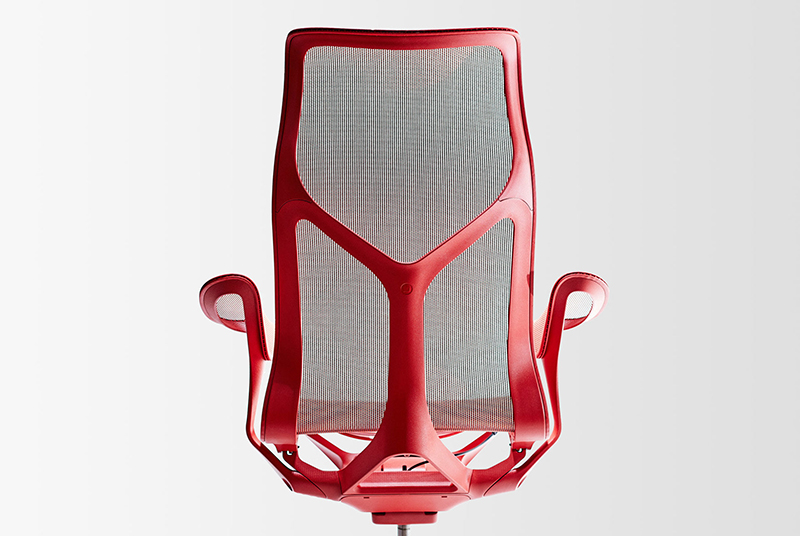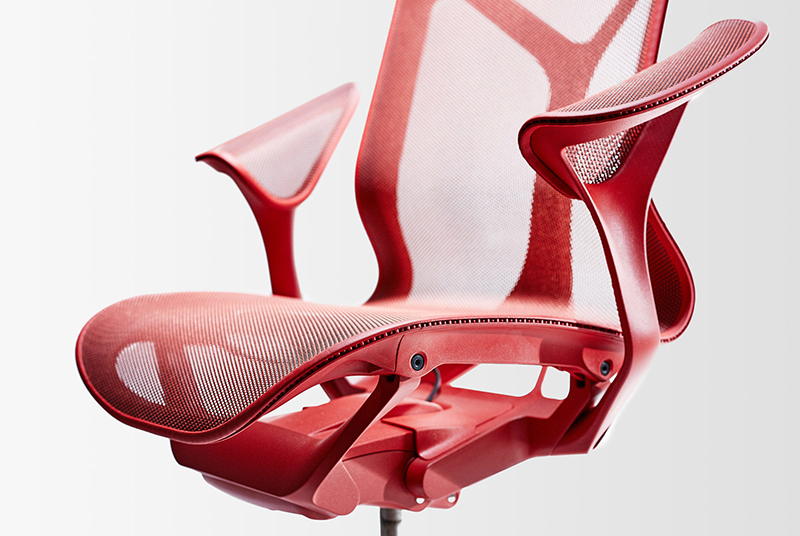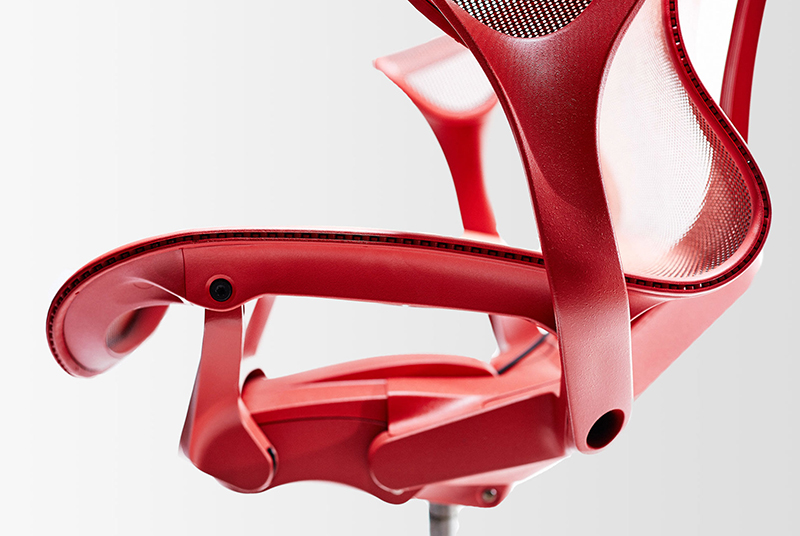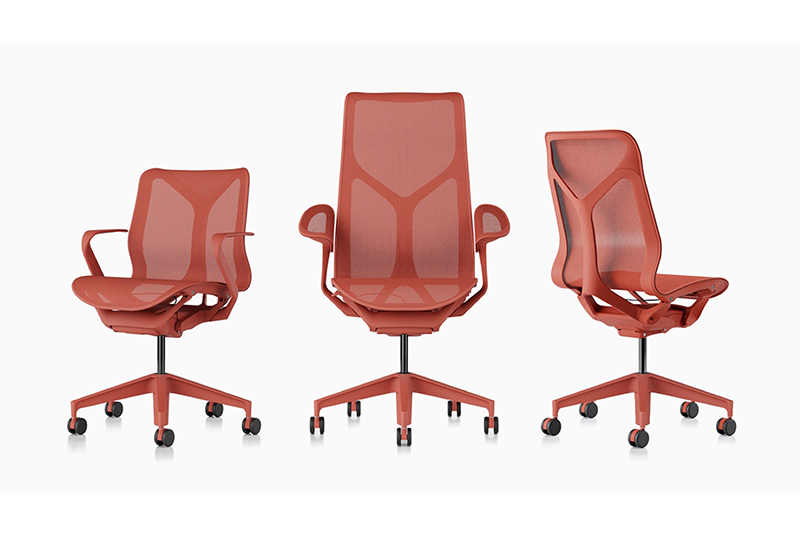No company has ever made an office chair like Herman Miller’s latest, including Herman Miller itself.
When the fabled American furniture designer released the Aeron office chair in 1994, it spread like wildfire. Aeron is cited as America’s best-selling office chair, a present-day classic that even occupies a spot in the Museum of Modern Art’s permanent collection.
Cosm, made in collaboration with the German design firm Studio 7.5, is Herman Miller’s newest and perhaps most important furniture release since Aeron. Within its spindly, exoskeletal frame exists a great many talking points, but the upshot is this: Cosm is the ideological opposite of Aeron.


Aeron set itself apart by way of its many manual adjustments — up or down, forward or backward, taut or loose reclining, lumbar height adjustment, lumbar depth adjustment and more. Cosm, on the other hand, adjusts to the sitter automatically. Apart from height-adjustment tabs for the seat and armrests, it is passively ergonomic, harboring technology that, based on loads of complicated academic research, results in improved comfort and increased efficiency.
“We just weren’t happy with what we saw as serious design flaws in the chairs using passive ergonomics,” said Scott Openshaw, Herman Miller’s Human Factors & Ergonomics Manager. Cosm’s key triumph is that it follows the natural motion and pivot points of the sitter’s body, rather than forcing the body to follow the motion of a mechanism. As a result, it does not lift the user’s legs when they recline. In the world of passive ergonomics, the trait is revolutionary. According to Openshaw, it’s a nut that Allsteel, Steelcase, Humanscale and Knoll have yet to crack with their respective office chairs. It’s also the reason why Cosm took a decade to design.
“Basically, other passive ergonomic chairs aren’t able to account for different levels of applied vertical force,” Openshaw said. “[Cosm] dynamically positions the fulcrum on its springs, from user to user, which means it tailors itself to everyone’s best sitting experience and doesn’t lift people off the ground to account for the recline.” Put more simply, Cosm is able to match the comfort granted to active ergonomic chairs (the ones with knobs and levers) with almost zero user knob-turning.
The rest of the chair’s bonafides stem from more patents and fresh ideas. A continuous form of the suspension — versus a separate seat and back — conforms uniquely to each user and stays in constant contact with their back, providing total spinal support. Sloping slightly downward, Cosm’s so-called “leaf arms” behave differently depending on how relaxed you are — sit straight up and they act as pillows for your elbows, recline and they shift parallel to the ground for total arm support.
Herman Miller is betting on Cosm becoming the office chair of the 2010s (like Aeron in the 1990s and 2000s). It is intended for the modern coworking space, the home office or any place where collaboration is present and seating charts are not. If Aeron was a chair for one, Cosm is a chair for many.
























